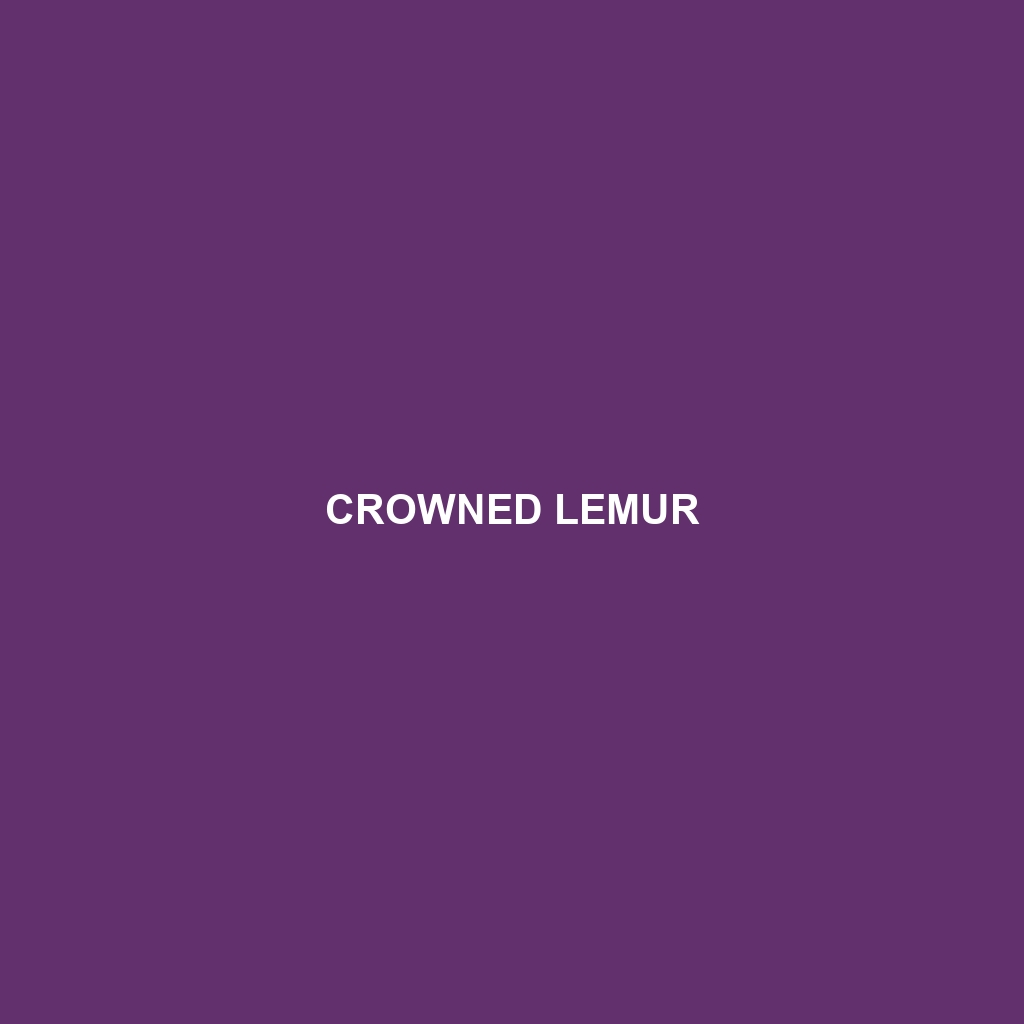Crowned Lemur: An Overview
Common Name: Crowned Lemur
Scientific Name: Eulemur coronatus
Habitat
The Crowned Lemur is primarily found in the northeastern regions of Madagascar. This species thrives in both humid rainforests and dry deciduous forests. Their habitat features a rich diversity of flora, providing ample shelter and food resources. Due to their limited geographic distribution, they are sensitive to environmental changes and habitat degradation.
Physical Characteristics
Crowned Lemurs are medium-sized primates, with adults weighing between 2.5 to 3.5 kg (5.5 to 7.7 lbs). They have a distinctive appearance, characterized by a short, rounded face and large, expressive eyes. The fur is generally reddish-brown in color, with a lighter underside. Their most striking feature is the crown of black fur on their heads, which gives them their name. They possess long limbs that aid in their remarkable climbing abilities.
Behavior
This species is primarily diurnal, meaning they are most active during the day. Crowned Lemurs are social animals, often living in small groups consisting of 2 to 10 individuals. Their behavior includes vocal communication and a variety of movements through the trees, often leaping between branches. They are known for their playful antics, which can often be observed during mating or social bonding periods.
Diet
The diet of the Crowned Lemur is primarily herbivorous, consisting mainly of fruits, leaves, and flowers. They are particularly fond of ripe fruits, which are abundant in their habitat. Additionally, they consume seeds, nectar, and occasionally, small insects. This diverse diet plays a crucial role in the dispersal of seeds within their ecosystem.
Reproduction
Crowned Lemurs typically breed from September to November, with a gestation period of about 120 days. Females usually give birth to a single offspring, although twins can occur on rare occasions. After birth, the young are carried by their mothers for several weeks. Mating rituals include various vocalizations and grooming behaviors, which strengthen social bonds within the group.
Conservation Status
Currently, the Crowned Lemur is classified as endangered by the International Union for Conservation of Nature (IUCN). The primary threats to their survival include habitat loss due to deforestation and hunting. Continuous efforts in conservation are vital to protect this unique species and its habitat.
Interesting Facts
One fascinating fact about the Crowned Lemur is that they exhibit a unique facial expression known as the grimace, which signals submission or affection among their social groups. Additionally, they are one of the few lemur species that have a pronounced seasonal breeding cycle.
Role in Ecosystem
The Crowned Lemur plays a significant role in its ecosystem as a seed disperser, aiding in the propagation of various plant species. Their feeding habits encourage forest regeneration and biodiversity. As a prey species for larger predators, they also contribute to the food web dynamics within their natural habitat.
